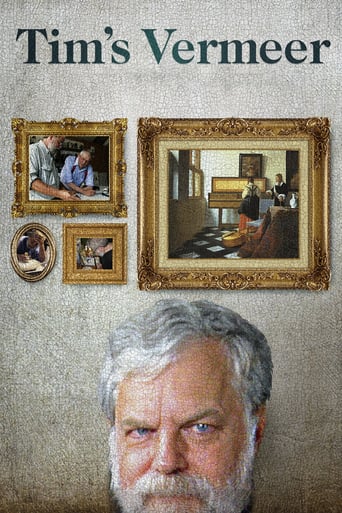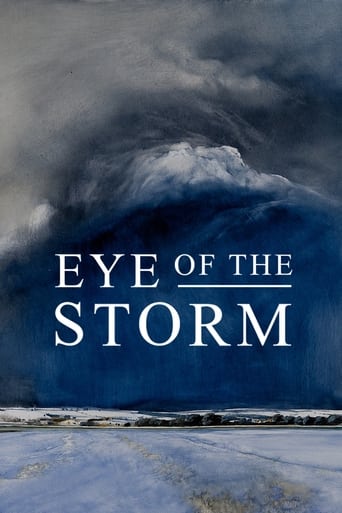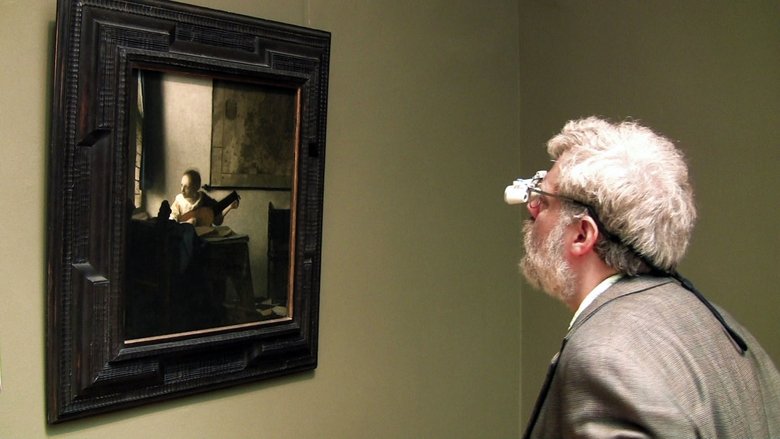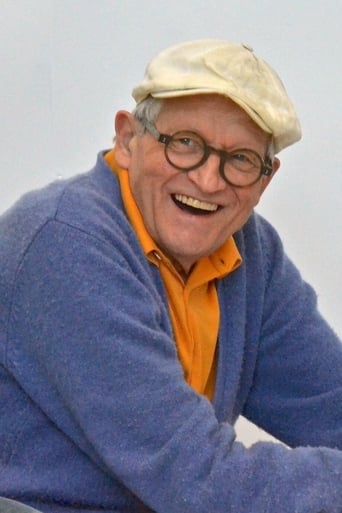
Tim's Vermeer
December. 06,2013 PG-13Tim Jenison, a Texas based inventor, attempts to solve one of the greatest mysteries in all art: How did Dutch Master Johannes Vermeer manage to paint so photo-realistically 150 years before the invention of photography? Spanning a decade, Jenison's adventure takes him to Holland, on a pilgrimage to the North coast of Yorkshire to meet artista David Hockney, and eventually even to Buckingham Palace. The epic research project Jenison embarques on is as extraordinary as what he discovers.
Similar titles





Reviews
Great Film overall
Pretty good movie overall. First half was nothing special but it got better as it went along.
It's the kind of movie you'll want to see a second time with someone who hasn't seen it yet, to remember what it was like to watch it for the first time.
The movie turns out to be a little better than the average. Starting from a romantic formula often seen in the cinema, it ends in the most predictable (and somewhat bland) way.
I found the DVD of this documentary sitting on the shelf of my local public library, just gathering dust. The brief description sounded very interesting so I brought it home and watched it. I recall maybe 30+ years ago visiting the New Orleans Museum of Modern Art, and seeing highly detailed old paintings and marveling at the artwork. Some may have been Vermeer, I don't recall.The subject is the 17th century Dutch painter Vermeer. His works are known for their realistic, almost "photographic" qualities. But photography as we know it had not been invented yet. But the camera obscura was well know.This caught the attention of inventor and wealthy Tim Jenison who had founded a company dealing in such things as video, broadcast graphics, special effects, and those sorts of things. He became interested in this subject and pursued it for several years. He first tried using a camera obscura directly but it didn't work well.Not a painter himself, Jenison even went to Holland to see, study, and measure the room Vermeer had used for many of his paintings. Then back in San Antonio carefully built a replica in a warehouse. He devised a way to use optics and mirrors to allow him to see a scene and paint it on canvas. The documentary is not too long, under 90 minutes, and is pretty fascinating. There will never be any proof, there are no old accounts or letters relating to the technique Vermeer, but they make a very strong case for Vermeer having used some sort of technique like this, with lenses and mirrors, to create his highly accurate paintings with a photographic look, not only the images but also the lighting and shadings. It seems Vermeer was an early photographer, instead of film or digital imaging he captured detailed images with paint.
I would imagine that only art students or avid art collectors would know the name Vermeer if it was spoken out loud, where the rest of us would have to Google his name and learn about this name. Vermeer is actually a name, well a last name in Johannes Vermeer, who was a great painter in the 1600s. His work is known all over the world and is sought after by royalty, celebrities, and very wealthy business people. What makes Vermeer standout than any other painter from the 1600s? Well that's an interesting topic and question. It's such a fascinating subject, that Penn and Teller (the magicians and entertainers) decided to make one of their famous documentaries about it.This matter is is of great interest because Vermeer's paintings are photo-realistic. That is odd, because, it would be very difficult or impossible to capture the lighting, shades, and intricate details that Vermeer captured in his paintings if he did it free hand from memory, which he and people claimed he did. Since Penn and Teller are in the business of calling 'Bullshit', they seemed to have a great beginning to an incredible story, which was how did Vermeer really get the images so detailed in his paintings.Luckily for Penn and Teller, they knew a guy named Tim Jenison, who is a very wealthy technologist, meaning he has invented and sketched the way for new technology over the past few decades. It also means that he might be a bored billionaire with some interesting hobbies, one of those being Vermeer. Tim had a theory that Vermeer in fact did NOT paint these free hand, but rather used new technology at the time to basically trace his paintings, thus he set out to prove his theory, which took seven years to prove from start to finish. Tim's theory stated that Vermeer used a camera obscura, which was fairly new back in the 1600s, to project an image onto a canvas or wall.The projected image is portrayed upside down, but what Tim figured out is if you place a mirror that reflects that image under your eye and on top of your canvas, you have the image that you can sketch perfectly as if you were tracing it. First off, Tim has never painted in his life. Hell, he didn't even know how to hold a paintbrush correctly, but when he attempted to paint a portrait of someone as a trial run, it turned out spectacular, as if he has painted his entire life.After a few more test runs, Tim decided to try this theory on an actual Vermeer painting, specifically the 'The Music Lesson', because of it's intricate and vivid details on the rug and the lighting from the windows. But Tim didn't want to use modern day technology. Instead, he wanted to recreate what it was like for Vermeer in the 1600s. So, being a billionaire, he constructed the room, according to the painting and used the old equipment that Vermeer would have used to get his photo-realistic paintings. And thus the real story is set in motion as Tim spent eight months painting a Vermeer.We get to see the highs and lows of Tim's psyche as he struggles to finish the painting, even saying to the camera "If this wasn't for a movie, I would have quit already." Tim, Penn and Teller, travel to England to meet with some famous artists who reflect on Vermeer and Tim's theory as well as stop by Buckingham Palace to see the actual Vermeer painting, 'The Music Lesson', which is a comical bit in true Penn and Teller form. Throughout the documentary, seeing Tim paint different sections and how the small details are captured, we start to really believe that Vermeer indeed must have used this technique, even if it took many months to complete.And maybe Vermeer wasn't an artist, but one of the first technologists, just like Tim several hundred years later. In the end, Tim painted a Vermeer, and when he showed other art scholars and collectors his piece, they couldn't believe it and said it might just be better than the original. 'Tim's Vermeer' is a short, fun, and interesting documentary about one man's adventure to prove that a celebrated artist might have used technology to help him paint.
This is an extremely well-made documentary about one man's curiosity, his relentless pursuit of an answer, and ultimately the possible solution of one of the art world's mysteries. But is that enough to recommend watching this movie? Not really. At times, this movie is as exciting as literally watching the paint on the canvas dry.I applaud the dedication of the subject to re-create the exact supplies, tools, and environment used by Vermeer. However, his efforts to demystify the artist's creation does not do anything other than to propose that the art is nothing more than a something that can be created by a dispassionate exercise of skills. What his recreation misses is the art of creating a scene, the passion of a painter to express something original, and the genius of capturing it all.To view my other movie reviews, please visit:https://nomorewastedmovienights.wordpress.com
Nowadays, realistic digital images can be achieved through all kinds of technological tricks and specialized software. That's why I'm amazed by the capacity from painters such as Johannes Vermeer to achieve practically photo-realistic images 4 centuries ago, employing the archaic tools from the craft: pigments, oils, brushes and canvas. I don't know too much about art, but there's no need to be a connoisseur in order to appreciate the perfection from paintings such as The Art of Painting, The Little Street and Woman Holding a Balance (not to mention Girl with a Pearl Earring, which inspired an excellent movie with the same title that considerably extended Vermeer's fame). And now, in 21st century, inventor Tom Jenison (founder of the company NewTech, whose most famous creations are the animation software Lightwave and the video switcher Tricaster) is an authentic connoisseur, and his curiosity about Vermeer's techniques made him to conceive a possible solution to the mystery of the realism achieved in his paintings. It is known that many artists in that period employed the "camera obscura" (a dark room with a small hole through which an inverted image from the exterior is projected) as a guide to make the sketch of the person or landscape to be painted; but none of that explains Vermeer's extraordinary handling of illumination, atmosphere and detail. What is more, there aren't any documents which describe his techniques, and there aren't even any records of his studies, whether they were formal or as a learner from some other master painter. In summary: an authentic historical mystery accentuated by the value and beauty from his artistic legacy... until Jenison conceived an ingenious system of lenses and mirrors which, in his own words, "turns the artist into a machine", and allows him reality without the need of possessing particular talent... just inflexible discipline and dedication. But all this will just be an interesting theory, until Jenison will be able to recreate the painting The Music Lesson. The irreverent duet of magicians Penn (Jillette) and Teller are friends of Jenison's, and when they found out about the unusual project, they decided to make a documentary about it, alternating interviews to experts (such as David Hockney and Philip Steadman), testimonies from aficionado painters (such as actor Martin Mull) and "talking heads" such as Jillette himself, whose long relationship with Jenison humanizes the documentary, bringing personal anecdotes and videos which illustrate us about the inventor's tenacity and geniality. I will refrain myself from revealing Jenison's technique, because it deserves to be seen in order to appreciate its elegant simplicity, and at the same time, the necessary ingenuity to design it. Besides, like a good magic trick, it's better not to know everything from the beginning, in order to enjoy the surprise and suspense from the project. Will Jenison be able to recreate the masterpiece? Or will it be a simple exercise of compulsive obsession? The result doesn't matter as much as seeing a genius trying to emulate another genius who lived 4 centuries ago. So, even though I wouldn't consider Tim's Vermeer an excellent documentary, I liked it pretty much, and I can recommend it to those who like art, technology or the simple pleasure of chasing an obsession until its last consequences.
Top Streaming Movies


















